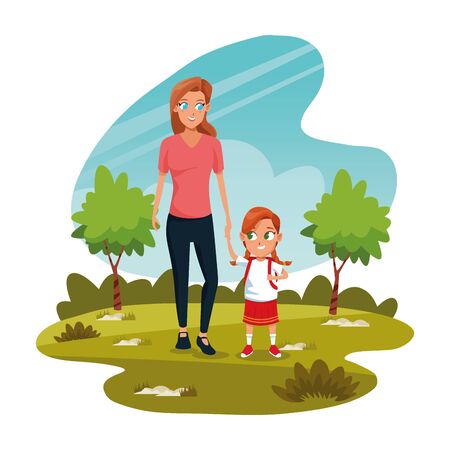Understanding Allergies in Infants
Allergies among infants are a growing concern in India, especially as more families rely on daycare centres and preschools. Allergic reactions happen when a baby’s immune system overreacts to harmless substances, known as allergens. In Indian settings, common allergens for infants include cow’s milk, peanuts, eggs, dust mites, pollen, and certain foods such as lentils (dal) and wheat. Symptoms can range from mild skin rashes and sneezing to more serious issues like vomiting, diarrhoea, swelling of lips or eyes, difficulty breathing, or even anaphylaxis. Indian parents and caregivers need to be particularly vigilant since many traditional foods and snacks given at schools may contain hidden allergens. Additionally, seasonal changes and urban pollution levels can trigger respiratory allergies in young children. Understanding these risks is the first step towards protecting infants in school and daycare environments. Early identification of symptoms—such as hives (urticaria), persistent cough, watery eyes, or unexplained fussiness—can help prevent severe allergic reactions. Awareness and knowledge empower both parents and teachers to take timely action for the safety of every child.
2. Promoting Allergy Awareness Among Caregivers and Teachers
Ensuring the safety of infants with allergies in Indian schools and daycare centres starts with effective communication and awareness among caregivers and teachers. It is crucial for parents to provide a detailed allergy history of their child, including specific allergens, symptoms of allergic reactions, and emergency procedures. In India’s diverse linguistic environment, it is important that this information is communicated not only in English but also in Hindi or the regional language spoken by staff members. This approach helps bridge any language gaps and ensures that all caregivers, regardless of their linguistic background, fully understand the child’s needs.
The Importance of Language-Appropriate Communication
Many Indian schools and daycare centres employ staff from various regions who may be more comfortable communicating in their native languages. To ensure clear understanding, parents should provide written instructions about the childs allergies in both English and the relevant local language (such as Hindi, Tamil, Bengali, Telugu, or Marathi). This reduces misunderstandings during emergencies when swift action is required.
Essential Allergy Information to Share With Caregivers
| Information | English Example | Hindi/Regional Example |
|---|---|---|
| Allergen(s) | Peanuts, Dairy | मूंगफली, दूध (Hindi) |
| Symptoms | Rash, Swelling, Breathing Difficulty | चकत्ते, सूजन, सांस लेने में कठिनाई (Hindi) |
| Emergency Medication | Epinephrine Auto-injector | एपिनेफ्रिन ऑटो-इंजेक्टर (Hindi) |
| Emergency Contact Details | Parent Phone Number | माता-पिता का फ़ोन नंबर (Hindi) |
| Immediate Steps to Take | Administer medication; call emergency services | दवा दें; आपातकालीन सेवा को बुलाएं (Hindi) |
Cultural Sensitivity in Training Sessions
Organizing regular training sessions for caregivers and teachers that include demonstrations and discussions in local languages can significantly improve their preparedness. Role-playing exercises in both English and regional languages help staff confidently recognize and respond to allergic reactions. By fostering an inclusive approach that respects India’s linguistic diversity, schools and daycare centres create a safer environment for all children with allergies.

3. Safe Food Practices for Indian School Meals and Tiffins
Guidelines for Allergy-Safe Food Preparation
Ensuring allergy safety in Indian schools and daycare centres starts with how food is prepared and handled. Always inform school staff and tiffin service providers about your childs allergies in detail. Insist on separate utensils and cooking surfaces for allergen-free meals to prevent cross-contamination. Encourage the use of clear food labels, especially for homemade snacks and packed lunches. Teachers and caregivers should be trained to recognise common signs of allergic reactions, and emergency contact information must be readily available.
Popular Indian Allergens to Watch Out For
Indian cuisine is diverse, but some ingredients are common allergens among children. The most notable include peanuts (groundnuts), milk (doodh), eggs, tree nuts (like cashew or badam), soy, wheat (gehun), sesame (til), and mustard seeds (sarson). Traditional sweets such as laddoos, barfis, and halwas often contain nuts or dairy. South Indian foods may use coconut, which can also trigger allergies in some children. Always check with teachers about food ingredients before school events or shared meals.
Managing Shared Food During Festivals and Celebrations
Festivals like Diwali, Holi, Eid, and Christmas are celebrated with a variety of foods in Indian schools. While these events bring joy, they also increase the risk of accidental exposure to allergens due to shared sweets and snacks. It is important to educate teachers, helpers (ayahs), and even classmates about your child’s allergies. Provide a safe snack box (tiffin) during celebrations to avoid uncertainty. Schools should have clear policies discouraging food sharing unless all ingredients are known. Encourage organisers to choose allergy-friendly options or label foods clearly during events.
Key Takeaway
By following careful food preparation guidelines, being aware of popular Indian allergens, and managing shared food during festive occasions, parents and schools can work together to create a safer environment for infants with allergies.
4. Emergency Response and Access to Medication
Ensuring a quick and effective emergency response is crucial for infants with allergies in Indian schools and daycare centres. Having a clear action plan, proper medication, and access to medical care can save lives during an allergic reaction.
Steps to Create an Allergy Emergency Action Plan
- Identify Allergens: Work with parents to list the specific allergens for each child, such as nuts, milk, or dust.
- Appoint Responsible Staff: Assign teachers or ayahs (helpers) who are trained to recognize allergy symptoms and act quickly.
- Display Emergency Contacts: Clearly post the child’s emergency contacts and doctor’s number in accessible areas.
- Training Sessions: Conduct regular training for staff on recognising symptoms and administering first aid, including the use of antihistamines.
- Keep Medication Accessible: Store antihistamines or doctor-prescribed medicines in a labelled box within easy reach, not locked away.
- Create a Response Chart: Use a simple chart outlining steps to follow in case of an allergic reaction (see below).
Emergency Allergy Response Chart
| Step | Action | Who Is Responsible |
|---|---|---|
| 1 | Recognise Symptoms (rash, swelling, trouble breathing) | Main teacher/assigned helper |
| 2 | Administer prescribed antihistamine immediately | Trained staff member |
| 3 | Call parents and emergency contact numbers provided | School office/assigned staff |
| 4 | If severe reaction (anaphylaxis), rush to nearest hospital/doctor without delay | Driver/school transport coordinator |
| 5 | Document the incident for future safety improvement | School principal or administrator |
The Importance of Medication Access in Indian Settings
In India, traffic congestion and distance from hospitals can delay emergency care. Therefore, keeping antihistamines readily available on campus is essential. For children with known severe allergies, schools should discuss with families about the possibility of keeping an epinephrine auto-injector if prescribed by a doctor. Medicines must be checked regularly for expiry dates and replaced as needed.
When to Reach the Nearest Hospital or Doctor?
- If the infant shows difficulty in breathing, swelling of lips/tongue/throat, or becomes unconscious—these are signs of anaphylaxis. Immediate transport to the nearest hospital is necessary. Do not wait for parental arrival.
- If there is only mild rash or itching after exposure and symptoms subside after antihistamine administration, monitor closely but still inform the parents.
- If symptoms persist or worsen despite giving medicine, seek medical help immediately.
Culturally Sensitive Note for Indian Schools & Daycares:
Please ensure all medicines and plans are discussed in advance with parents in their preferred language (Hindi, Tamil, Bengali etc.), respecting family preferences and religious considerations regarding treatment options. Collaboration between caregivers, teachers (didis), ayahs, and healthcare providers builds a safer environment for every child.
5. Collaborating with Other Parents and Community
In India, the sense of community and togetherness is deeply rooted in our culture. When it comes to allergy safety for infants in schools and daycares, collaboration with other parents and community members becomes essential.
Encouraging Inclusion and Sensitization
It is important to promote an inclusive environment where every child’s health needs are respected and accommodated. Parents can play a proactive role by sensitizing others about common allergies, such as those related to nuts, dairy, or eggs—ingredients often found in Indian snacks like laddus, dahi, or paneer-based items. Organize group discussions or awareness sessions during parent-teacher meetings to share information about recognizing allergic reactions and what steps should be taken in emergencies.
Fostering Mutual Support
Creating a support network among parents helps ensure that everyone remains vigilant about food sharing and celebrations, which are frequent in Indian schools. Encourage parents to communicate openly about their children’s allergies before cultural festivals or birthday parties. Sharing allergy-safe recipes for tiffin boxes or party treats can help everyone feel included and prevent accidental exposure.
Rooting Practices in Indian Values
Drawing on Indian values of caring for one another (seva) and collective well-being (samajik suraksha), foster a spirit where no child feels left out due to dietary restrictions. Support from the community not only protects children with allergies but also teaches empathy, responsibility, and respect—values that are at the heart of Indian society.
6. Regular Health Check-ups and Communication
Routine health check-ups play a crucial role in ensuring the safety of infants with allergies, especially in school and daycare settings across India. Regular visits to your paediatrician allow for updated health records and timely identification of any new allergies or changes in your childs condition. This is particularly important given the diverse environments and food practices common in Indian schools and daycare centres.
Open and ongoing communication between parents, doctors, and school authorities is equally vital. Parents should share detailed medical reports, allergy management plans, and emergency contacts with teachers and caregivers. It is advisable to have these documents available both in English and a local language such as Hindi or the regional language spoken at the centre for better understanding.
Frequent discussions help ensure that everyone involved is aware of the latest health recommendations and knows how to respond quickly in case of an allergic reaction. Organising periodic meetings or check-ins with school staff can reinforce awareness about food allergies, cross-contamination risks (especially from common Indian snacks like besan laddoo or namkeen), and appropriate use of prescribed medicines such as antihistamines or epinephrine auto-injectors if recommended by your doctor.
By fostering a culture of transparency and collaboration, parents can empower schools to provide a safer environment for all children. Remember, in India’s diverse cultural landscape, clear communication—supported by regular medical updates—is key to managing infant allergies effectively and preventing avoidable health incidents during school hours.


